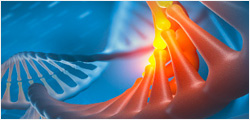Salmonella infection, especially intracellularly residing Salmonella, is a major cause of enteritis and persistent
infections worldwide due to resistance to conventional antibiotic therapy. Antimicrobial peptides (AMPs) are
promising post-antibiotic therapeutics. However, they have limitations in clinical translation due to lack of
targeting ability, insufficient intracellular permeability, and gastric instability. This study developed an oral AMP
hydrogel system that targets infected sites via in-situ delivery to treat Salmonella Typhimurium (S. Typhimurium)
infection-induced enteritis. Leveraging the reactive oxygen species (ROS)-rich microenvironment at infection
sites, AMP Z(WK)2 undergoes ROS-t... More
Salmonella infection, especially intracellularly residing Salmonella, is a major cause of enteritis and persistent
infections worldwide due to resistance to conventional antibiotic therapy. Antimicrobial peptides (AMPs) are
promising post-antibiotic therapeutics. However, they have limitations in clinical translation due to lack of
targeting ability, insufficient intracellular permeability, and gastric instability. This study developed an oral AMP
hydrogel system that targets infected sites via in-situ delivery to treat Salmonella Typhimurium (S. Typhimurium)
infection-induced enteritis. Leveraging the reactive oxygen species (ROS)-rich microenvironment at infection
sites, AMP Z(WK)2 undergoes ROS-triggered self-assembly into nanofibers with a diameter of approximately 10
nm. At a concentration near its critical aggregation concentration of 64 μg/mL, Z(WK)2 can entrap and eliminate
over 97 % of S. Typhimurium within 2 h, demonstrating a synergistic antibacterial effect through combined
physical entrapment and membrane disruption. By integrating propylene glycol (PG), the system achieved over
95 % of intracellular S. Typhimurium eradication. Further encapsulation of Z(WK)2 and PG within a hydrox�ypropyl methylcellulose (HPMC) network (termed H@Z-P), protected the peptide from enzymatic degradation
(e.g., by tyrisin, chymotrypsin, and pepsin) and provided enhanced intestinal adhesion, with sustained
mucoadhesion for over 24 h. Notably, H@Z-P exhibited excellent biosafety in vitro and in vivo. In mice, oral
H@Z-P administration reduced bacterial burden (approximately 3-log reduction), protected intestinal barrier
integrity, attenuated intestinal inflammation, and suppressed systemic inflammation and oxidative stress in
response to S. Typhimurium. This study provides a coordinated strategy of ROS-responsive structural remodeling
and delivery optimization, targeting infectious sites against enteropathogenic bacteria in humans and animals.

































